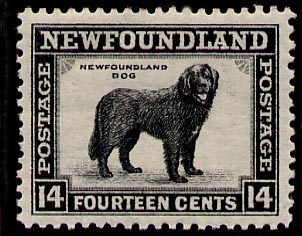
History

 |
Newfoundland History |
 |
The Labrador Boundary Question
[Canadian Annual Review , 1926-27; for the full citation, see the end of the text]
The long-standing boundary dispute between Canada and Newfoundland was disposed of on Mar. 1st, 1927 , when the Judicial Committee of the Privy Council gave judgment in favour of Newfoundland , with slight reservations in favour of Canada . The disputed territory covered 120,000 square miles, including 60,000 miles of spruce forests and important water powers. The case concerned a treaty made in 1825 between Quebec , then a separate colony, and Newfoundland , and the question submitted to the Lords of Appeal was:
"What is the location and definition of the boundary as between Canada and Newfoundland in the Labrador Peninsula under the Statutes, Orders-in-Council and Proclamations?"
The answer was:
"The Boundary between Canada and Newfoundland in the Labrador Peninsula is a line drawn due north from the Bay or Harbour of Blanc Sablon as far as the 52nd degree of north lattitude, and from thence westward along that parallel until it reaches the Romaine River; then northward along the right or east bank of that river and their headwaters to their source and from thence due north to the crest of the watershed or height of land there, and from thence westward and northward along the crest of the watershed of the rivers flowing into the Atlantic Ocean until it reaches Cape Chidley."
Though the case turned largely on instruments dating back to 1763, it did not become an issue between the two Governments until 1903. The increasing value of spruce for pulpwood and of water-powers since that time enormously increased the value of the territory. The question became acute in 1902 when Newfoundland granted certain licences to cut timber over large areas on the Hamilton River , and Canada disputed its right to do so. The work of preparing the case on both sides extended over a period of years and it even took five years to agree on the wording of the question to be submitted to the Privy Council. In its arguments before the Privy Council which were heard in October and November, 1926, the Dominion representatives contended that the "coast" of Labrador ceded to Newfoundland in the old instruments signified merely the fishing coast. The representatives of Newfoundland contended that "coast" signified the watershed lying back of the coast (as in the use of such phrases as Atlantic Coast States and Pacific Coast States ).
In finding in favour of Newfoundland the Lords of Appeal made the following reservations: Newfoundland 's claims regarding the southern boundary of Labrador , which would have given it part of the original Province of Quebec , were dismissed. Woody Island , opposite the Bay of Blanc Sablon , claimed by both litigants, was awarded to Canada . In the arguments Newfoundland was represented by Sir John Simon, K.C., Mr. Barrington-Wood, K.C., Hon. W. J. Higgins, K.C., Attorney-General of Newfoundland, Mr. W. T. Monckton and Mr. C. H. Pearson; Canada was represented by Mr. H. P. Macmillan, K.C., (of the Scottish Bar), Mr. Aimé Geoffrion, K.C., Mr. Maurice Alexander, K.C., Mr. H. Stuart Moore and Mr. C. P. Plaxton, of the Canadian bar.
After the decision was announced there was some inconsequential agitation in the Canadian press in favour of abolishing appeals to the Privy Council but it evaporated when it was understood that only an outside tribunal could settle a dispute of this kind. In Quebec, the dissatisfaction took the form of a resolution in the Legislature which was ultimately repudiated by the Premier, Hon. L. A. Taschereau.
In Newfoundland , its victory before the Privy Council securing to it vast areas of spruce forests and valuable water powers, was the most important event of 1926. Local depression was created in the last quarter of 1926 by a shrinkage of about $3,000,000 in the fishing revenues, owing to a drop in prices. Imports and exports in 1926 almost balanced each other and in each instance exceeded $27,000,000. Nearly fifty per cent. of imports were from Canada . Public revenues and expenditures stood each at a little less than $10,000,000 with a slight margin on the latter side. The Public Debt on Jan. 1st, 1927, was $69,517,303 and was shortly afterward increased by a loan of $5,000,000 subscribed in London . In sealing and paper and pulp manufacture the island was prosperous but there was a slight falling-off in iron production.
The Monroe Government, elected in 1924, found difficulty in implementing its reform programme and in March the Prime Minister revealed the fact that he had suggested a coalition to the Opposition which had been refused. To test public sentiment a By-election was held in East St. John's in April, 1927, which resulted in a victory for the Opposition. Mr. Monroe, left with a majority of but one, decided, however, to meet the Legislature, which he immediately called for May 11 to consider only measures of first importance, and intimated that there would be an appeal to the people in the early Summer. During the year Newfoundland suffered the loss by death of two of her most noted public men, Sir Michael Cashin and Sir Robert Bond, both of whom had filled the post of Prime Minister.
Source : "The Labrador Boundary Question", in The Canadian Annual Review of Public Affairs, 1926-27, Toronto, The Canadian Review Company, 1927, 844p., pp. 150-151.
© 2004 Claude Bélanger, Marianopolis College |